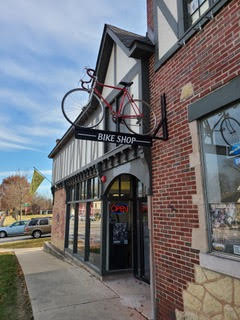By Linda Sullivan
At one time some of the very people who love Illinois’s 6th
District Climate-Nerd Congressman Sean Casten for his passionate dedication to
stopping climate change thought he might be too nerdy, too steeped in science,
to have an impact negotiating the famously frustrating Washington bureaucracy
and Congressional relationships. They did not expect him to be the person to
figure out ways around the evenly divided Senate to move key parts of Biden’s
climate agenda.
 |
Sean Casten, D-IL06, (wearing plaid shirt and green hat)
goes on Sierra Club hike led by Mike Davis and Ed Max
at Bluff Spring Fen |
Ha! Casten put that fear to rest when, after weeks of nerd-talk that
seemed to fall on deaf ears about changes that could be made by the Federal
Energy Regulatory Commission (FERC) to achieve President Biden’s climate goals,
he did a rap on the floor of Congress that went viral (#HotFERCSummer), a
parody of Megan Thee Stallions’s Hot Girl Summer. The Daily Show’s Trevor Noah
made it his “Moment of Zen” where it got 78,400 views under a banner “So Hip,
So Cool.” Another rap in front of a sign reading “Dolly Parton & Sean
Casten FERC-ing 9 to 5” got 41,000 views
. Casten posted
dozens of #HotFERCSummer posts which together got over a million views.
Although a little-known agency, FERC rulings affect fuel markets,
pricing, and transmission. It can advantage clean energy or advantage fossil
fuels. Its rules could implement key parts of the Biden Climate Agenda that are
stuck in the Senate. But since rulings take time,
getting rulings in place that decarbonize the electric sector and promote clean
energy needed to start at the beginning of the Biden term, not a moment to
lose.
 |
Sean Casten does forest preservation with
Sierra Club, Earth Day 2019 |
Sean’s argument was that the FERC needs to be fully staffed; it
needed new guidelines that direct it to move toward clean power. Above all, the
FERC needed Biden to turn his attention to appointing a new chairman.
The FERC has five commissioners. Two must come from the minority
party; a third can come from either party. The Republican chairman’s term had
come to an end in June, but since Biden had not appointed a successor, the
Republican chairman remained on, giving Republicans a majority that advantaged
fossil fuels.
Hence Casten’s Hot FERC Summer campaign.
The campaign ended when Biden appointed and the Senate confirmed Willie
Phillips as chair of the FERC, giving the Democrats a majority. Casten also has advanced
bills that direct the FERC to take into consideration the cost of greenhouse
gas emissions on health, safety, and welfare, and use its regulatory powers to solve
the transmission problems that prevent renewable energy from moving from where
it is created to where it is needed.
While news headlines remind us that Biden’s climate agenda remains
stalled, Casten has quietly advanced climate bills that have been signed into
law on their own or become law as part of larger bills. For instance, within
the National Defense Authorization Act are provisions proposed by Casten that require 10% of existing and future military installations
to reach net zero emissions by 2035. Also required is a report on the status of
the current Department of Defense energy security goal, which aims to have the
agency produce or procure not less than 25% renewable energy by 2025. This is
significant because the DoD consumes 77 percent of all energy consumed by the
federal government, and climate change is recognized as a top security threat
to the U.S.
Because Casten sits on the House Financial Services
Committee, he was able to embed into the Omnibus Spending Package his bill that
forces companies to disclose their financial climate risk to investors.
Because of his appointment to the House Select
Committee on Climate Crisis and his work helping write the committee’s report (summary
here), Casten had a huge impact on the climate
provisions in Biden’s infrastructure bill and Build Back Better bill. Although at the time of this writing, Build
Back Better awaits passage in the house, the committee’s website notes that 377
of its recommendations have been passed in the House, and 201 have been signed
into law. https://climatecrisis.house.gov/tracker
Casten’s expertise and influence continue to be
recognized by his colleagues. He was
recently appointed cochair with Raja Krishnamoorthi (IL08) of the House Sustainable Energy and Environment
Coalition Power Sector Task Force. “Having
come to Congress after two decades helping companies profitably reduce
emissions in the private sector, I know first-hand that you can expand access
to cleaner, cheaper energy, create jobs, and lower carbon emissions at the same
time,” Casten noted in a press release. “To combat the climate crisis with the
urgency it demands, we must transition to a carbon-neutral economy as quickly as
possible, and that can’t happen without first decarbonizing the US power
sector. Modernizing the electric grid to maximize energy efficiency has been a
top priority of mine since entering Congress. I am honored to be named cochair
of this task force and look forward to working with my colleagues to lead
Congress in these efforts.”













